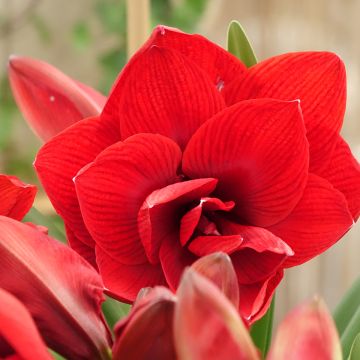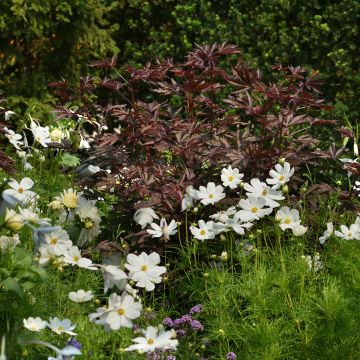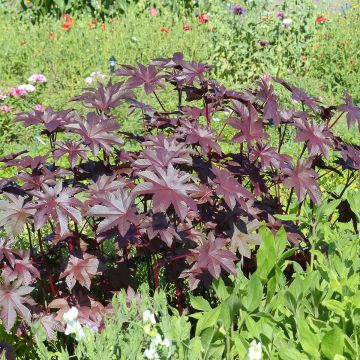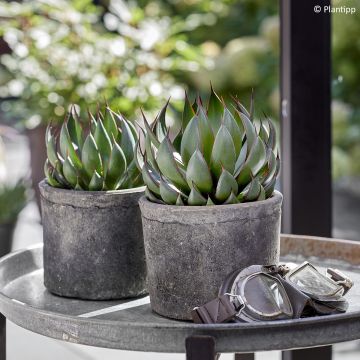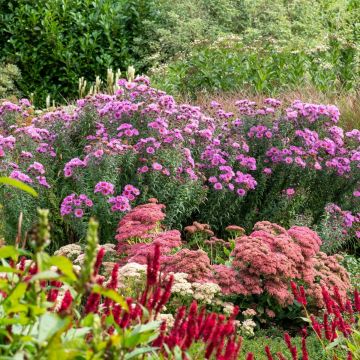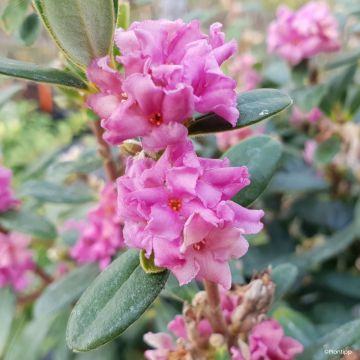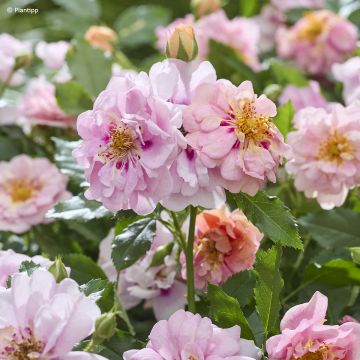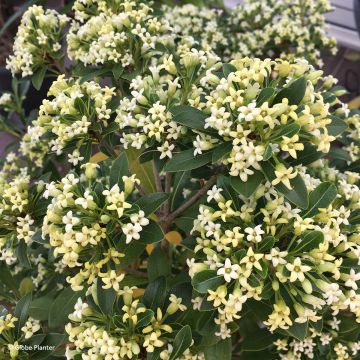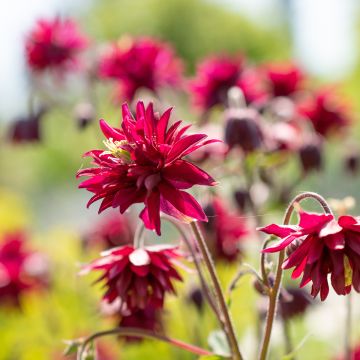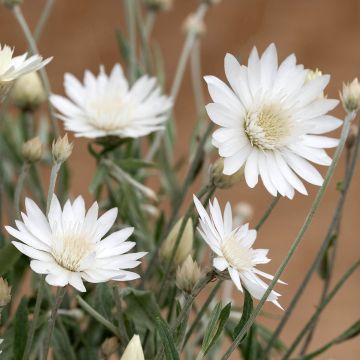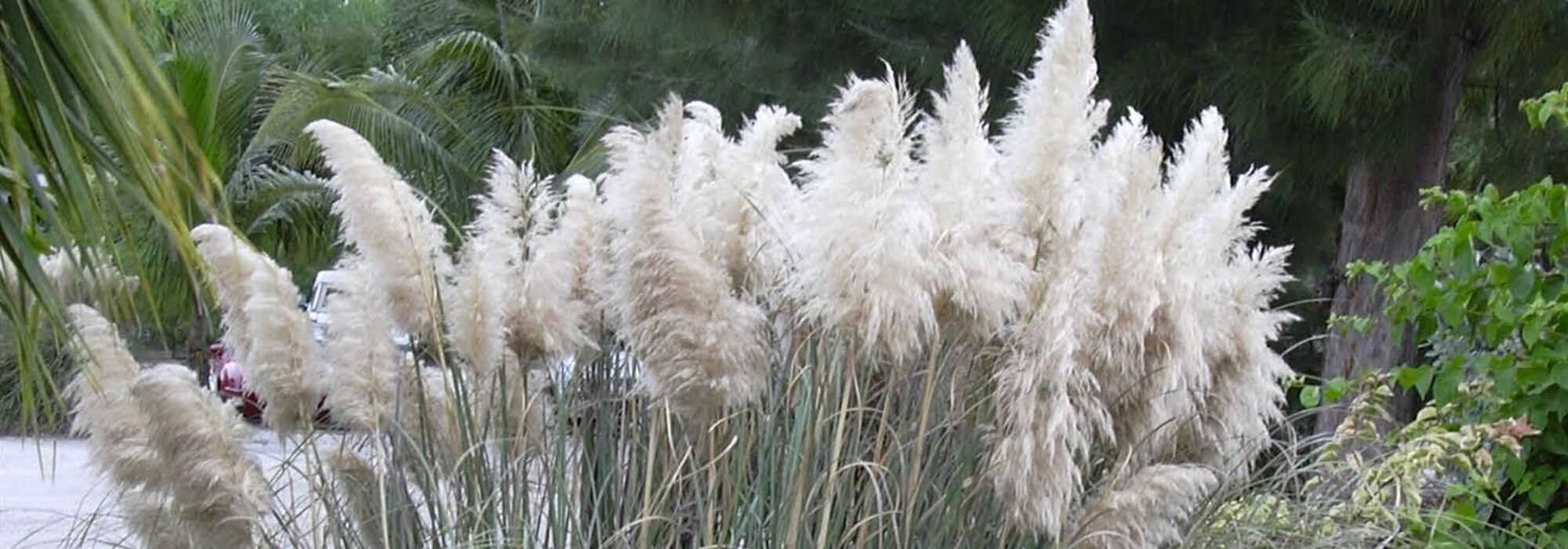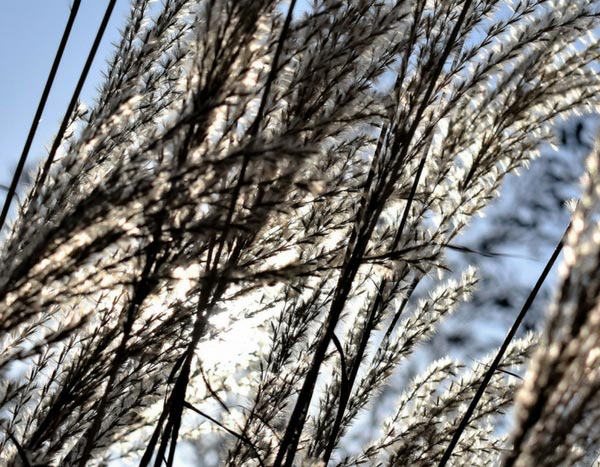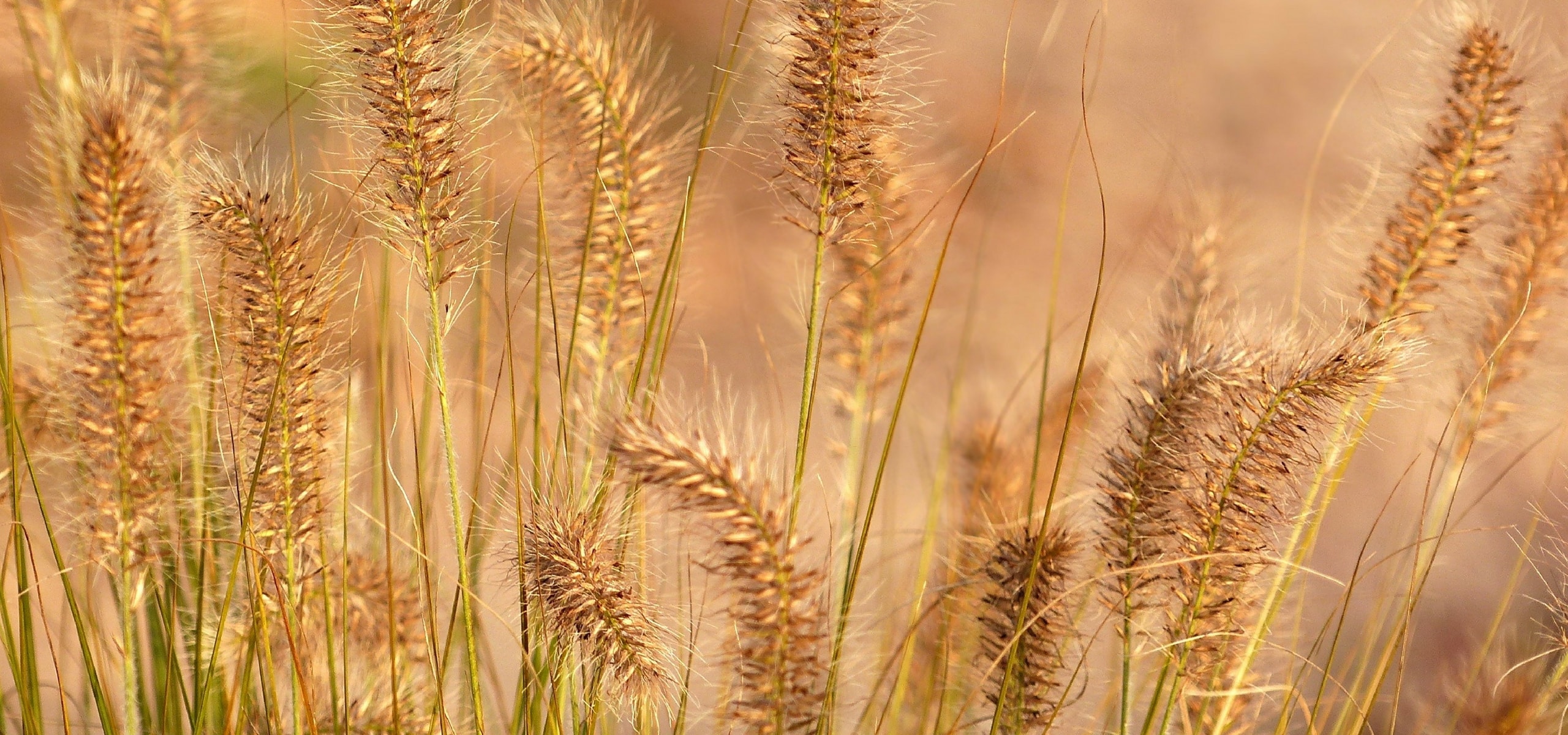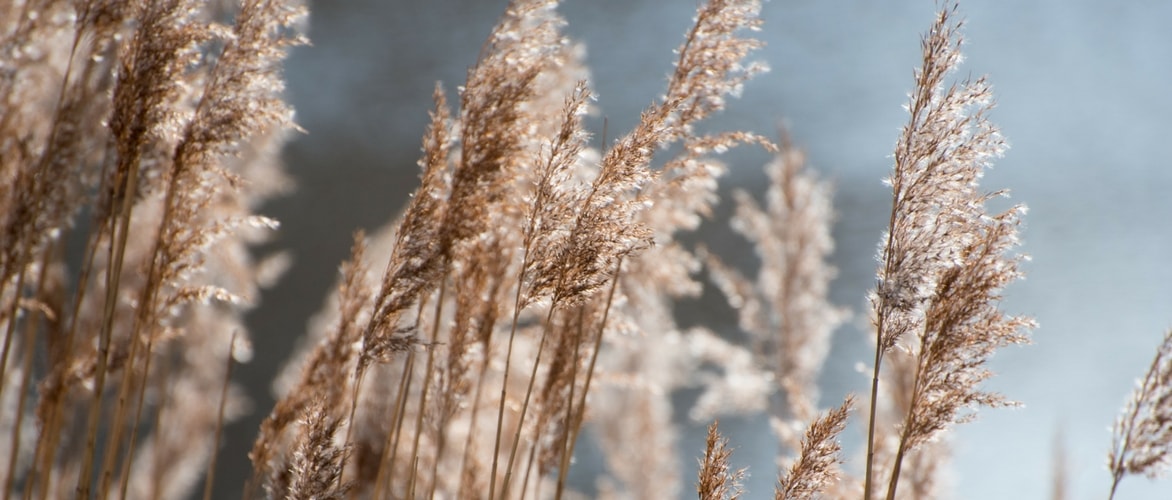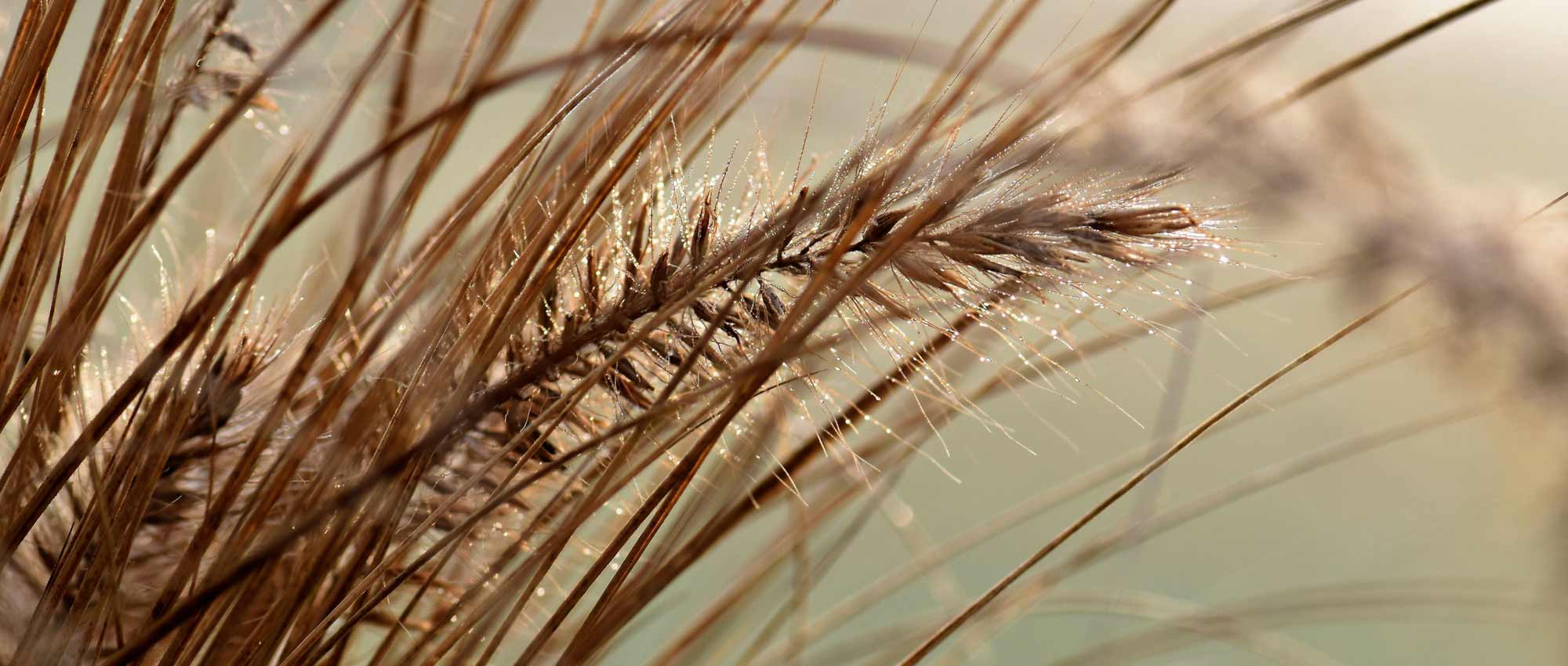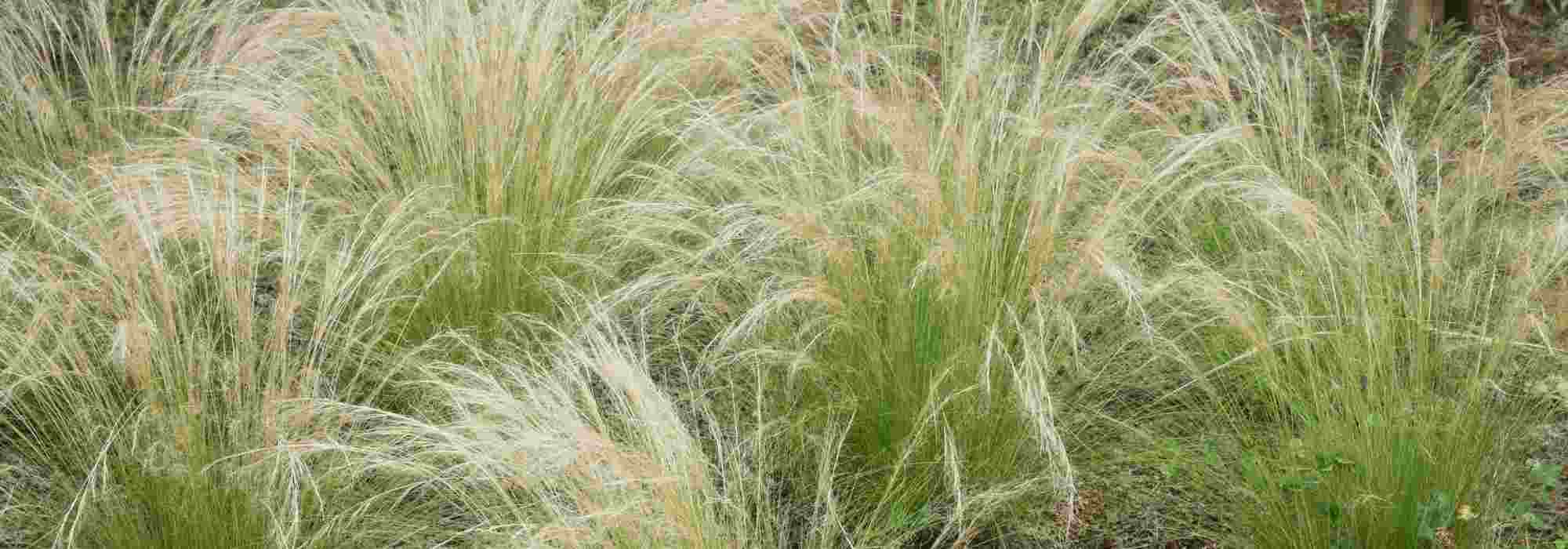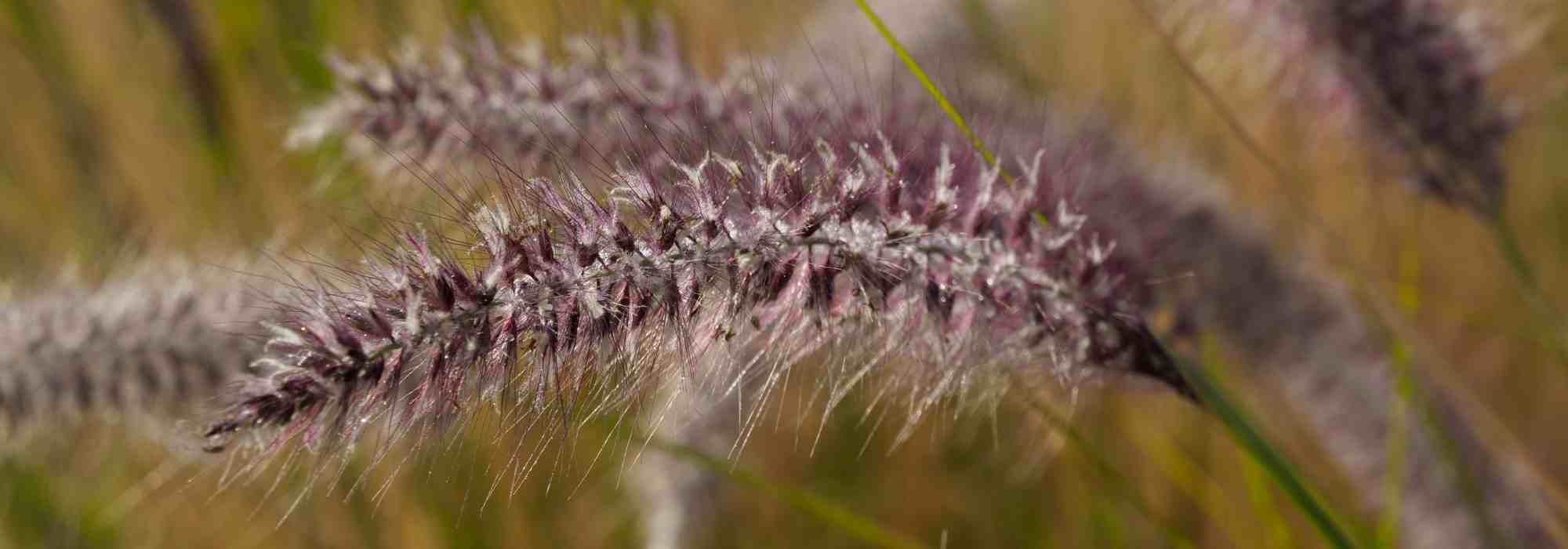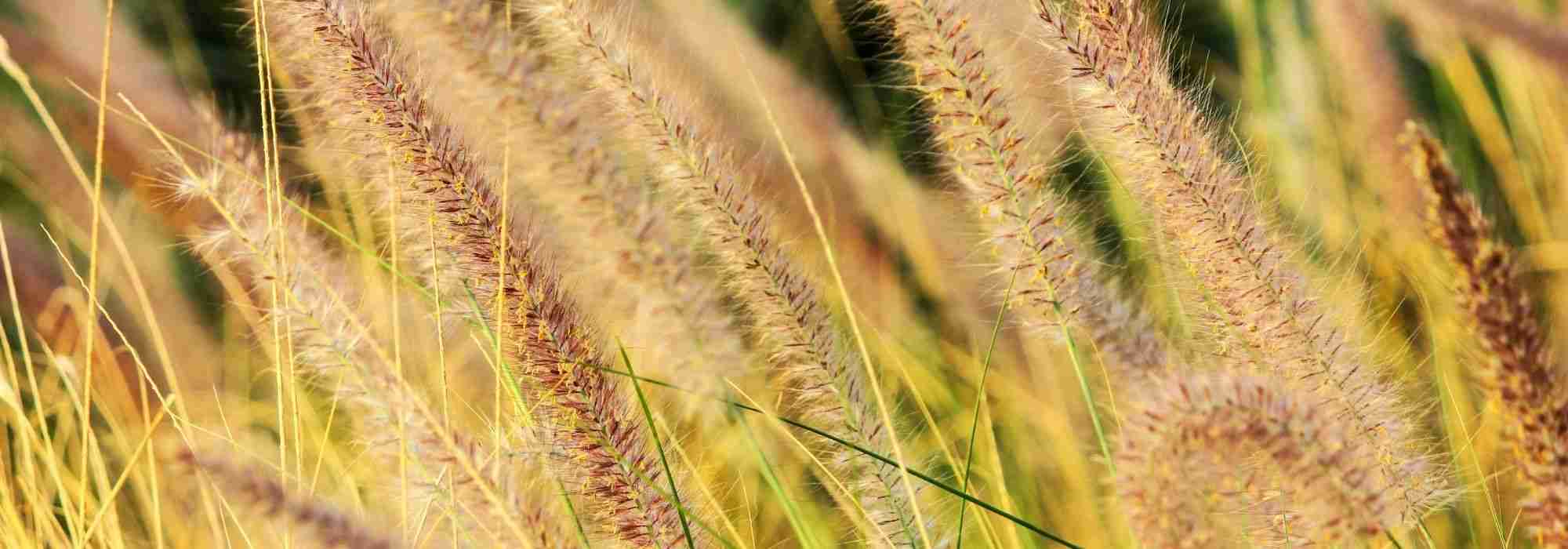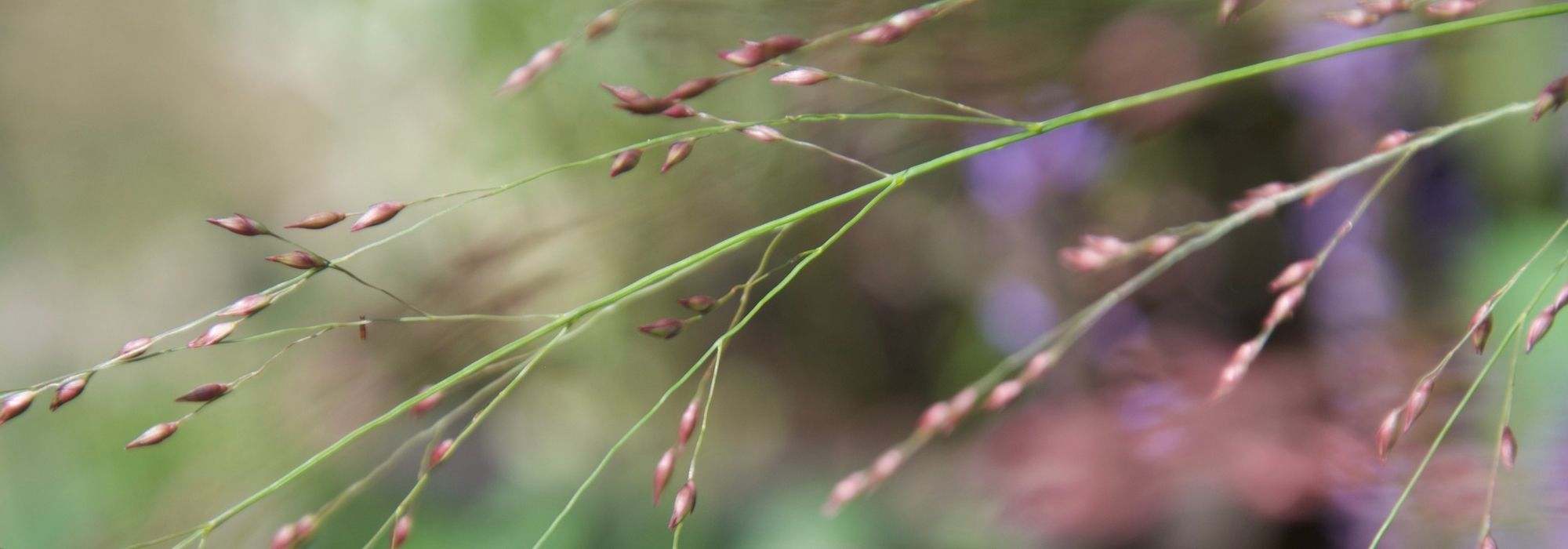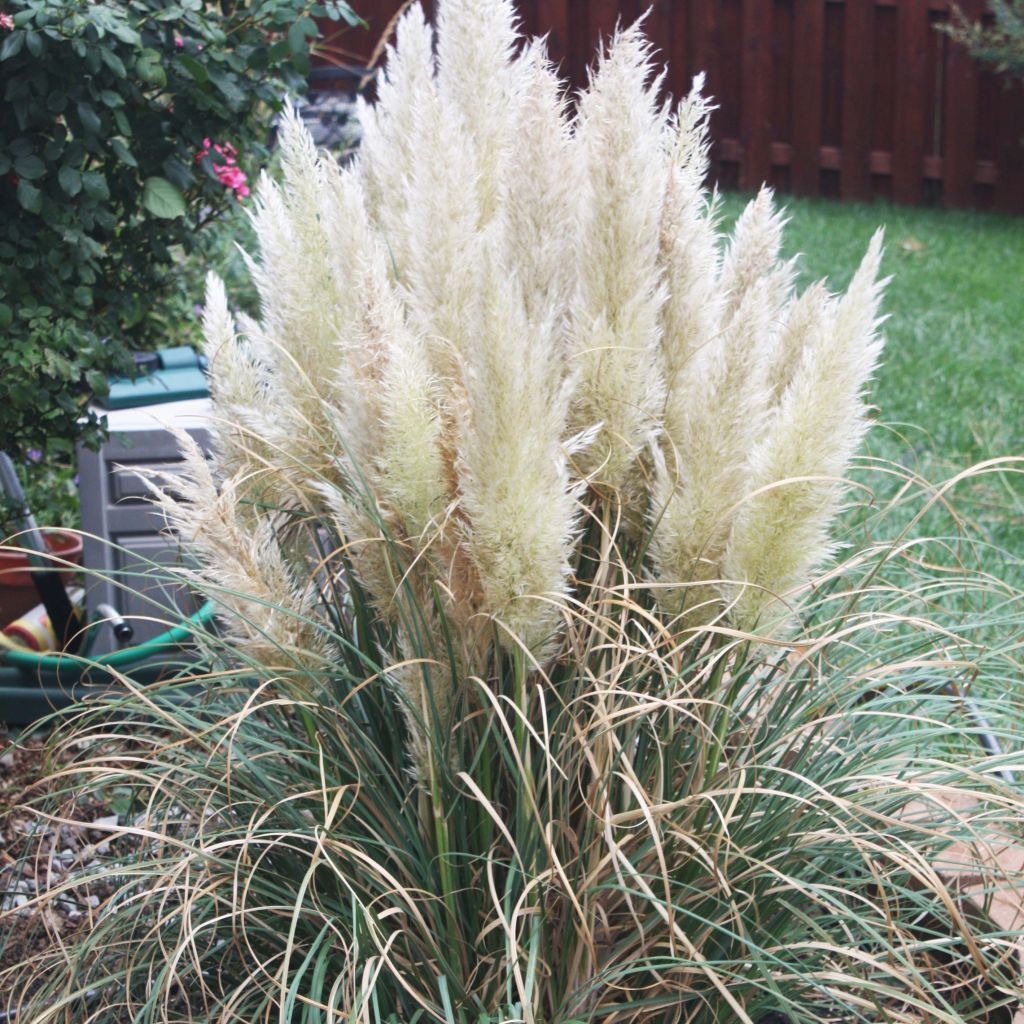

Cortaderia selloana Pumila
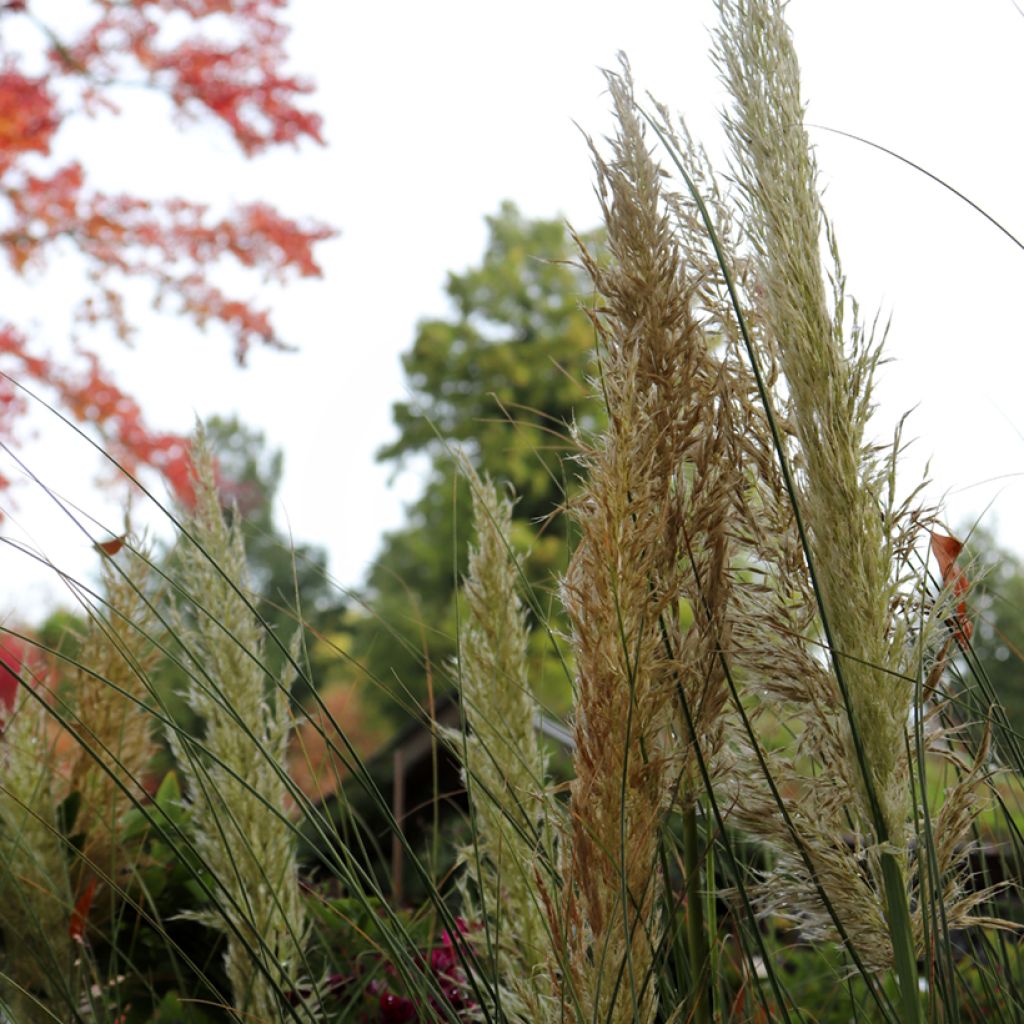

Cortaderia selloana Pumila
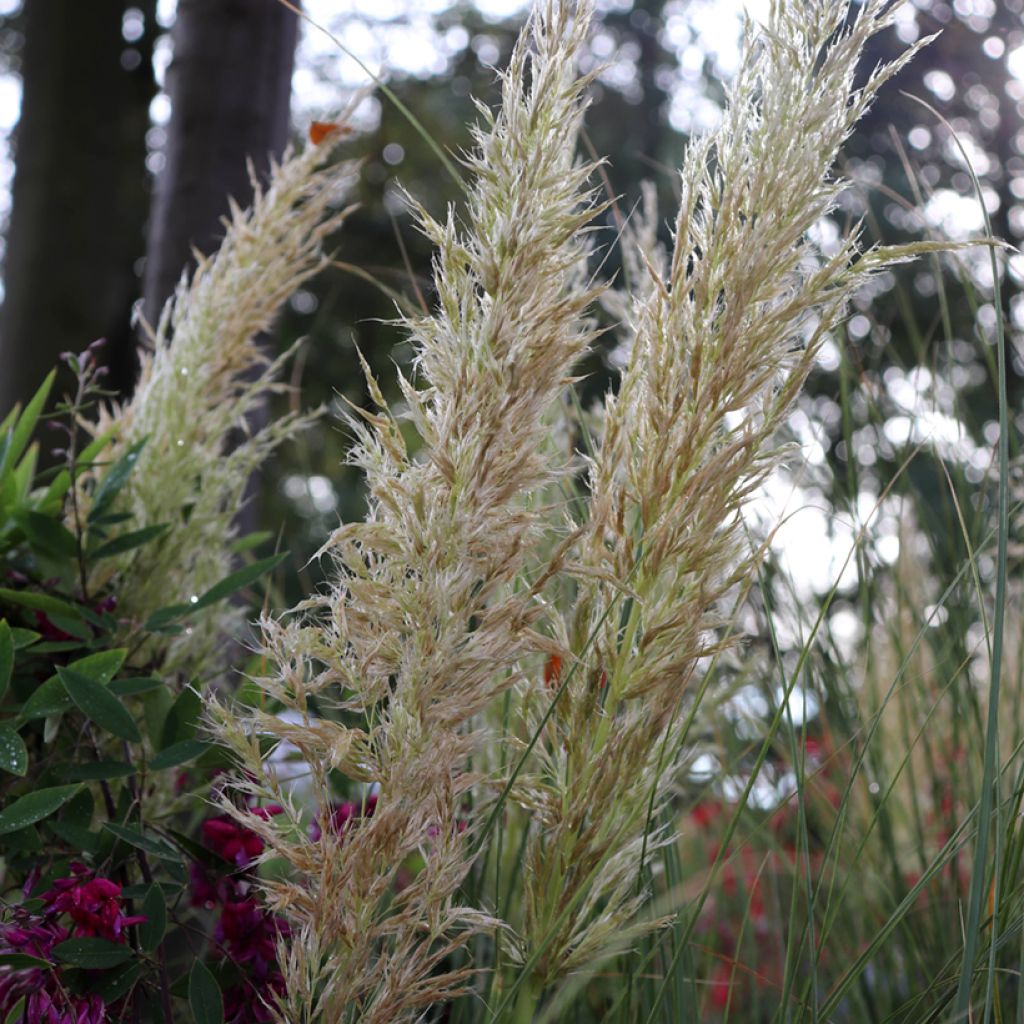

Cortaderia selloana Pumila
Cortaderia selloana Pumila
Cortaderia selloana Pumila
Pampas Grass
Received a beautiful clump, well-filled. May not flower this autumn, but we'll see... Very interesting plant due to its compact size compared to the type. Excellent for borders. I will plant mine next to the gate, on the outside entrance of the garden (but still on our property), under the trumpet vine, which adorns one of the gate posts. I think it will look very nice, especially since I have another tall herb, right next to it, near the fence, also on the outside, and which, in turn, will produce large salmon-pink plumes. In fact, I have ordered a second dwarf pampas grass (cortaderia selloana pumila), which will adorn my main border (to fully appreciate its beautiful undulating plumes in the wind). Interesting fact: no need to prune the pampas grass in late winter as they are evergreen (unlike the miscanthus); however, these plants can be invasive in certain regions. Personally, I have both: pampas grass and various varieties of miscanthus. But the issue with miscanthus (although magnificent in summer and autumn) is that it leaves a gap in their place, from late winter to early summer (for about 3 months), until the grasses regrow for the new season, as miscanthus is deciduous, whereas the pampas grass adorns the garden all year round, being evergreen (DO NOT prune them at all!... but rather "comb" them to remove dead grass in late winter).
Rebecca, 06/08/2020
Special offer!
Receive a €20 voucher for any order over €90 (excluding delivery costs, credit notes, and plastic-free options)!
1- Add your favorite plants to your cart.
2- Once you have reached €90, confirm your order (you can even choose the delivery date!).
3- As soon as your order is shipped, you will receive an email containing your voucher code, valid for 3 months (90 days).
Your voucher is unique and can only be used once, for any order with a minimum value of €20, excluding delivery costs.
Can be combined with other current offers, non-divisible and non-refundable.
Why not try an alternative variety in stock?
View all →This plant carries a 12 months recovery warranty
More information
We guarantee the quality of our plants for a full growing cycle, and will replace at our expense any plant that fails to recover under normal climatic and planting conditions.

Does this plant fit my garden?
Set up your Plantfit profile →
Description
IMPORTANT: To preserve our natural ecosystems, we have removed this plant from our catalogue as it is considered invasive. It is, therefore, no longer available for sale.
The Cortaderia selloana 'Pumila', better known as 'Pumila' Pampas Grass, is a variety with moderate growth and a more compact habit, forming remarkable fluffy and silky panicles in late summer of a tender pale silver blonde. Slightly less hardy than others, this variety best suits mild climates. This beautiful perennial grass can easily grow in the sun, even in salty soil. As such, it is perfect for coastal gardens.
Cortaderia selloana, also known as Gynerium or Cortaderia argentea, is a large, highly ornamental grass belonging to the family Poaceae. It is native to South America, specifically Argentina and Brazil, where it covers the edges of roads and trails, stream banks, fallow land, and disturbed areas by prolific self-seeding. This plant is characterised by its remarkable adaptability to its soil, even accepting the semi-arid conditions of subtropical climates. It is a dioecious plant, meaning there are male and female plants. It has given rise to numerous cultivars, which vary significantly in hardiness.
The 'Pumila' variety differs from the species mainly in its lower and more compact habit and the pale yellow colour of its flower heads. This grass forms a tuft of linear, evergreen foliage, which persists during mild winters. The leaves are sharp, challenging, and rustling. The mature plant reaches a height of 1.20m (4ft) when in flower, with a spread of 80cm (32in) to 1m (3ft). Its slightly arched habit resembles that of a fountain. The leaves are a relatively intense gray-green-blue colour. Its splendid flower heads appear in late summer, in August-September, in the centre of the tuft, in the form of large fluffy panicles, 30 to 50cm (12 to 20in) long, which persist on the plant at least until November, while taking on intense silver reflections. They are borne on sturdy cylindrical stems that are highly wind-resistant. When both male and female individuals are present, the female plants produce many seeds dispersed by the wind.
This widely used large grass has been in our gardens since the 1960s. The only point that can perhaps be emphasised is the misuse that has been made of it. It is true that it looks a bit ridiculous, planted all alone in the middle of a lawn, but it is so beautiful when used in mass plantings or a flower bed among shrubs. The Cortaderia selloana 'Pumila' indeed forms beautiful tufts with a very exotic appearance, but it should not be adopted in the garden without taking the time to consider it; its motto could well be: "I'm here, I'm staying!" This undemanding grass can adapt to all gardens in mild climates, even small ones. Suited for extensive plantings, its strong presence brings structure and grace if given enough space to grow. Contemplative gardeners will place it among asters, behind chrysanthemums, smoke bushes, or repeat-flowering roses and let it grow and expand. Pampas Grass blends in well with its pastel colours in urban areas, softening angles.
Attention: Pampas Grass can be invasive in certain regions. When it escapes from gardens, it covers fallow land, sandy areas, and wetlands, causing significant ecological disturbances. If you live in an affected region, we recommend not planting it. Many architectural grasses, such as Miscanthus, can replace it.
Cortaderia selloana Pumila in pictures
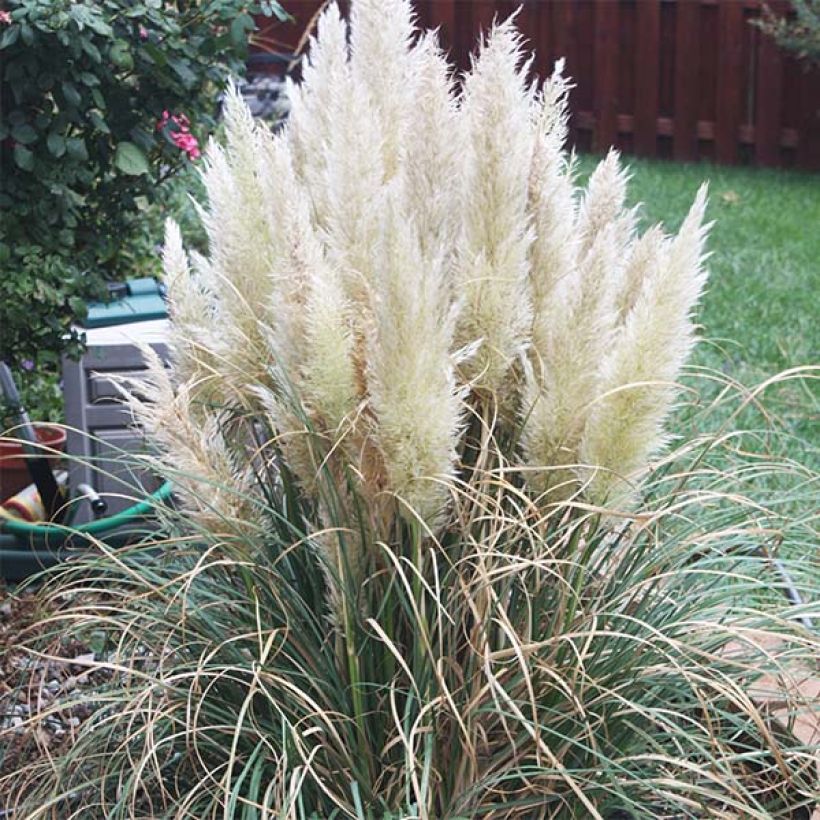

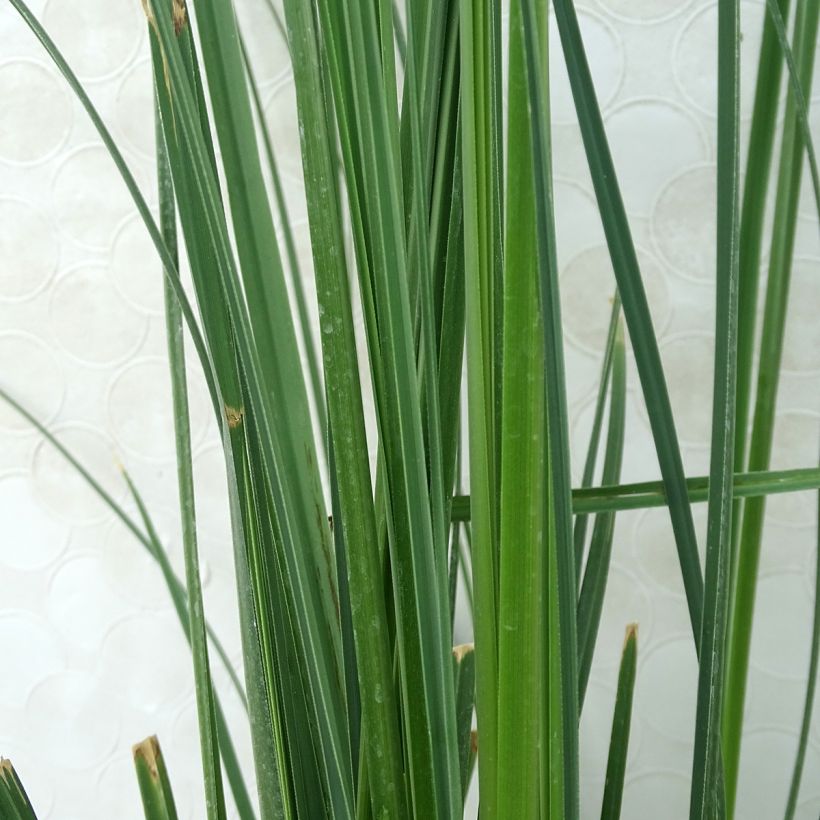

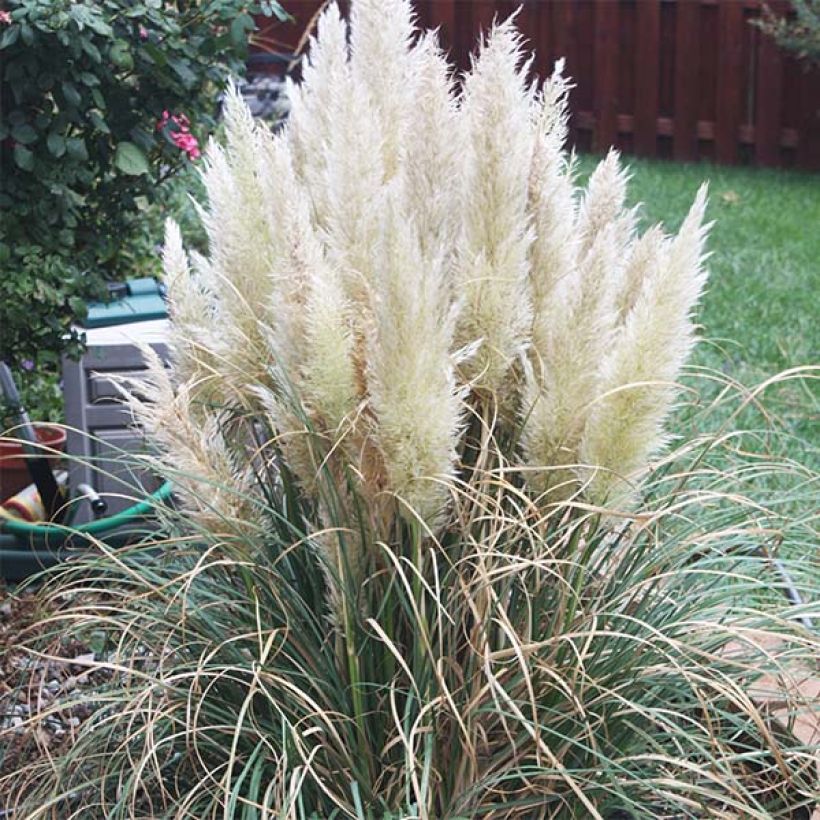

Flowering
Foliage
Plant habit
Botanical data
Cortaderia
selloana
Pumila
Poaceae
Pampas Grass
Cultivar or hybrid
Planting and care
The Cortaderia selloana 'Pumila' thrives in sunny environments. It's best to plant it in a soil that is rich, fresh, and well-drained. It can also tolerate less fertile and mediocre soil, even saline, but it's unsuitable for heavy and compact soils that may become waterlogged in winter. While it's easy to grow, avoiding excessive winter humidity is important as it cannot tolerate stagnant water. Water it abundantly after planting and provide regular watering during the first year. You should remove dead leaves in late winter (March to April), but avoid cutting back all the foliage. It's important to note that the leaves are sharp, so it's best to protect your hands with thick gloves while handling the plant. A well-established mature Pumila can withstand a maximum of -10 °C (14°F). If you live in colder regions, it's best to plant it in a sheltered location and in filtering soil, preferably in spring, to increase its chances of surviving more severe frosts.
Planting period
Intended location
Care
Planting & care advice
-
, onOrder confirmed
Reply from on Promesse de fleurs
Haven't found what you were looking for?
Hardiness is the lowest winter temperature a plant can endure without suffering serious damage or even dying. However, hardiness is affected by location (a sheltered area, such as a patio), protection (winter cover) and soil type (hardiness is improved by well-drained soil).

Photo Sharing Terms & Conditions
In order to encourage gardeners to interact and share their experiences, Promesse de fleurs offers various media enabling content to be uploaded onto its Site - in particular via the ‘Photo sharing’ module.
The User agrees to refrain from:
- Posting any content that is illegal, prejudicial, insulting, racist, inciteful to hatred, revisionist, contrary to public decency, that infringes on privacy or on the privacy rights of third parties, in particular the publicity rights of persons and goods, intellectual property rights, or the right to privacy.
- Submitting content on behalf of a third party;
- Impersonate the identity of a third party and/or publish any personal information about a third party;
In general, the User undertakes to refrain from any unethical behaviour.
All Content (in particular text, comments, files, images, photos, videos, creative works, etc.), which may be subject to property or intellectual property rights, image or other private rights, shall remain the property of the User, subject to the limited rights granted by the terms of the licence granted by Promesse de fleurs as stated below. Users are at liberty to publish or not to publish such Content on the Site, notably via the ‘Photo Sharing’ facility, and accept that this Content shall be made public and freely accessible, notably on the Internet.
Users further acknowledge, undertake to have ,and guarantee that they hold all necessary rights and permissions to publish such material on the Site, in particular with regard to the legislation in force pertaining to any privacy, property, intellectual property, image, or contractual rights, or rights of any other nature. By publishing such Content on the Site, Users acknowledge accepting full liability as publishers of the Content within the meaning of the law, and grant Promesse de fleurs, free of charge, an inclusive, worldwide licence for the said Content for the entire duration of its publication, including all reproduction, representation, up/downloading, displaying, performing, transmission, and storage rights.
Users also grant permission for their name to be linked to the Content and accept that this link may not always be made available.
By engaging in posting material, Users consent to their Content becoming automatically accessible on the Internet, in particular on other sites and/or blogs and/or web pages of the Promesse de fleurs site, including in particular social pages and the Promesse de fleurs catalogue.
Users may secure the removal of entrusted content free of charge by issuing a simple request via our contact form.
The flowering period indicated on our website applies to countries and regions located in USDA zone 8 (France, the United Kingdom, Ireland, the Netherlands, etc.)
It will vary according to where you live:
- In zones 9 to 10 (Italy, Spain, Greece, etc.), flowering will occur about 2 to 4 weeks earlier.
- In zones 6 to 7 (Germany, Poland, Slovenia, and lower mountainous regions), flowering will be delayed by 2 to 3 weeks.
- In zone 5 (Central Europe, Scandinavia), blooming will be delayed by 3 to 5 weeks.
In temperate climates, pruning of spring-flowering shrubs (forsythia, spireas, etc.) should be done just after flowering.
Pruning of summer-flowering shrubs (Indian Lilac, Perovskia, etc.) can be done in winter or spring.
In cold regions as well as with frost-sensitive plants, avoid pruning too early when severe frosts may still occur.
The planting period indicated on our website applies to countries and regions located in USDA zone 8 (France, United Kingdom, Ireland, Netherlands).
It will vary according to where you live:
- In Mediterranean zones (Marseille, Madrid, Milan, etc.), autumn and winter are the best planting periods.
- In continental zones (Strasbourg, Munich, Vienna, etc.), delay planting by 2 to 3 weeks in spring and bring it forward by 2 to 4 weeks in autumn.
- In mountainous regions (the Alps, Pyrenees, Carpathians, etc.), it is best to plant in late spring (May-June) or late summer (August-September).
The harvesting period indicated on our website applies to countries and regions in USDA zone 8 (France, England, Ireland, the Netherlands).
In colder areas (Scandinavia, Poland, Austria...) fruit and vegetable harvests are likely to be delayed by 3-4 weeks.
In warmer areas (Italy, Spain, Greece, etc.), harvesting will probably take place earlier, depending on weather conditions.
The sowing periods indicated on our website apply to countries and regions within USDA Zone 8 (France, UK, Ireland, Netherlands).
In colder areas (Scandinavia, Poland, Austria...), delay any outdoor sowing by 3-4 weeks, or sow under glass.
In warmer climes (Italy, Spain, Greece, etc.), bring outdoor sowing forward by a few weeks.






























